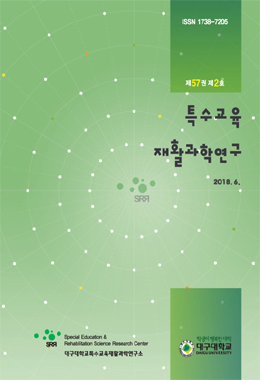본 연구의 목적은 발달장애성인의 일상생활활동에 대한 생활시간을 분석하는 것이다. 부산의 발달장애성인 600명을 대상으로 주중과 주말로 구분하여 생활시간과 도움시간의 자료를 설문지를 통하여 수집하였다. 생활소요시간과 도움 시간을 항목별로 나타냈다. 생활소요시간 중 필수 시간을 제외하고 의무와 여가 시간의 소계로, 의무와 여가, 주중과 주말로 나누어 군집분석을 하여 여가형, 균형형, 과업형으로 유형화하였다. 유형화에 따라 배경정보별 교차분석의 결과는 연령, 주거 유형, 수급종류, 부모연령, 가정소득에서 유의미한 차이가 나타났다. 성별이나 장애유형, 장애등급, 보호자 학력에서는 차이가 나타나지 않았다. 이러한 결과는 발달장애성인의 장애배경을 제외한 배경정보와 생활시간 유형을 고려하여 교육적 지원이나 복지 지원 체계를 달리 반영해야 함을 시사한다.
This study analyzes time-use of adults with developmental disabilities on daily-living related activities. Data were collected from 600 adults with developmental disabilities in Busan using surveys. The researcher collected the participants' time use data on daily-living activities and assistanted activities respectively during weekdays and weekends respectively. Daily-living activities and assistanted activities were presented as a list of individual items. After excluding necessary time, time use on daily-living activities were classified to either committed time or leisure time. A clustering analysis was conducted for these two time groups according to weekdays and weekend. This resulted in the following types of time use: Leisure-oriented type, balanced type, and task-oriented type. As a result of cross tabulation analysis, there was a statistically significant difference by age, housing type, welfare benefit, parents' age, and household income; not by sex, disability type, disability grade or parents' educational background. This indicates that a different educational or welfare support can be needed according to background information or the type of time-use on daily-living activities of adults with developmental disabilities.


